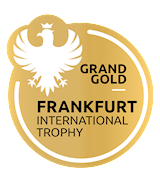TABLE OF CONTENTS
Best Bulgarian Wine Types
Mavrud is a highly valued, native Bulgarian grape variety that is predominantly grown in the province of Plovdiv. This late-ripening, dark-skinned grape particularly thrives in warmer climates, and it is used in the production of single varietal wines and blends.
Varietal Mavrud is typically a medium-bodied wine, with firm tannins, good acidity, and deep ruby red color. It usually comes off as rich and fruity, with typical aromas of prunes, ripe mulberries, or blackberries, and usually has a spicy, herbaceous finish.
Shiroka Melnishka Loza is an ancient, late-ripening Bulgarian grape variety that is predominantly grown in southwestern parts of the country, in the regions of Melnik, Petrich, and Sandanski. The grape produces age-worthy varietal wines that are rich in tannins and typically display notes and aromas of cherries, strawberries, and stone fruit, while matured varieties develop into more complex nuances of tar, leather, and spices.
The grape is also commonly used in blends, and it is typically known simply as Melnik – after a namesake town in Struma Valley.
Kadarka is a red grape with an uncertain origin. It is most likely a native Balkan variety that spread during Ottoman rule. Due to its finicky nature, it has slightly declined in popularity, but it is still an important red variety, especially in Hungary.
Kadarka is a late-ripening grape that mainly produces fruity and elegant red wines. It is versatile and terroir-driven, so the wines can often vary in character, but they usually have light to medium body, bright acidity, and low tannins. The aroma is typically fruity, often with hints of spice and sometimes with subtle floral notes.
Believed to be native to Bulgaria, this plump white grape is predominantly cultivated in the eastern parts of the country. Varietal Dimiat wines are typically aromatic, light, and fresh and usually display fruity aromas of apricots and quince.
Although Dimiat is mainly enjoyed young, some styles can benefit from aging, during which they develop subtle vanilla nuances. The wine pairs well with appetizers, while sweet varieties may be a good match to desserts. Apart from wines, the grape is also used in the production of Bulgarian brandy.
Melnik 55 or Ranna Melnishka Loza is a Bulgarian grape variety created as a cross between Melnik (Shiroka Melnishka Loza) and a mixture of pollen from Valdiguié, Durif, and Jurançon. It was later proven that the other parent was Valdiguié.
Although it was created in the 1960s, the grape was only recently recognized by Bulgarian winemakers, and it has yet to show its full potential. Melnik 55 is used in varietals and blends, and it typically produces ruby red wines with medium to full body and excellent aging potential.
Misket Cherven is a native Bulgarian grape used in the production of fragrant white wines—the word red merely refers to the pink hue of the grape. This late-ripening variety is cultivated in several Bulgarian regions, and along with winemaking, it is also enjoyed as a table grape.
The grape is used in varietals and blends. The wines are pleasant, fresh, and light with a pale yellow color and subtle green hues. The aromas are floral, fruity, and herbaceous, usually reminiscent of citrus fruit. On the palate, they are light to medium-bodied, with a lingering finish.
Rubin is a Bulgarian grape created in the 1940s at the Institute of Viticulture and Enology in Pleven. The grape is a cross between French Syrah and Italian Nebbiolo. It is a very resilient grape that ripens relatively early. Although it is mainly used in blends, varietal examples are becoming more common.
The wines produced from Rubin are deep red, with flavors dominated by red and black berries. The wines will often have earthy, floral (violet), and jammy character. They usually have good aging potential, and during maturation, they attain woody and vanilla-like aromas while the tannins become softer.
Pamid is an old European grape that has been cultivated for centuries. Although it is mainly associated with Bulgaria—where it was once the most widely planted grape—it is cultivated in several other European countries. Pamid is not a demanding variety to grow, but it tends to create wines that lack color, acidity, and sugar.
Most examples have a light, approachable character, pale ruby color, and low acidity. These wines are not intended for aging and are best enjoyed young, preferably as uncomplicated table wines. These fresh and fruity wines are easy-drinking and can pair with various dishes.
TABLE OF CONTENTS
Best Bulgarian Wine Producers
AWARDS

Concours Mondial de Bruxelles - Grande Médaille d'or
2023, 2022, 2020
AWARDS

Concours Mondial de Bruxelles - Grande Médaille d'or
2020, 2019
BEST Black Sea Gold Wines
AWARDS

Concours Mondial de Bruxelles - Grande Médaille d'or
2022
BEST Izba Karabunar Eood Wines
AWARDS

Concours Mondial de Bruxelles - Grande Médaille d'or
2023
BEST Zlaten Rozhen Ltd Wines
AWARDS

Frankfurt International Trophy - Grand Gold
2022
BEST Vinex Slavyantsi ad Wines
AWARDS

Concours Mondial de Bruxelles - Grande Médaille d'or
2020
BEST Winery Bratya Minkovi Wines
AWARDS

Concours Mondial de Bruxelles - Grande Médaille d'or
2019
BEST Angel's Estate Wines
AWARDS

Concours Mondial de Bruxelles - Grande Médaille d'or
2019
BEST Horizont USA Seven Generation Winery Wines
AWARDS

Concours Mondial de Bruxelles - Grande Médaille d'or
2019
BEST VP-Brands International SA Wines
TABLE OF CONTENTS
Best Bulgarian Wines
AWARDS

Concours Mondial de Bruxelles - Grande Médaille d'or
2022
AWARDS

Concours Mondial de Bruxelles - Grande Médaille d'or
2022
The Vineyards Selection Tenevo from Villa Yambol achieved the highest score among all samples submitted to the prestigious Concours Mondial de Bruxelles. It was declared the Best Red Wine of the competition, earning the title Revelation Red Wine, the highest global accolade.
Alongside this exceptional recognition, the wine was also awarded a Gold Medal. This marks the first time in the 30-year history of the competition that such an achievement has been accomplished, highlighting the wine’s unparalleled quality and craftsmanship.
AWARDS

Concours Mondial de Bruxelles - Grande Médaille d'or
2023
AWARDS

Concours Mondial de Bruxelles - Grande Médaille d'or
2023
AWARDS

Frankfurt International Trophy - Grand Gold
2022
AWARDS

Concours Mondial de Bruxelles - Grande Médaille d'or
2020
AWARDS

Concours Mondial de Bruxelles - Grande Médaille d'or
2020
AWARDS

Concours Mondial de Bruxelles - Grande Médaille d'or
2020
AWARDS

Concours Mondial de Bruxelles - Grande Médaille d'or
2020
AWARDS

Concours Mondial de Bruxelles - Grande Médaille d'or
2020
TasteAtlas food rankings are based on the ratings of the TasteAtlas audience, with a series of mechanisms that recognize real users and that ignore bot, nationalist or local patriotic ratings, and give additional value to the ratings of users that the system recognizes as knowledgeable. TasteAtlas Rankings should not be seen as the final global conclusion about food. Their purpose is to promote excellent local foods, instill pride in traditional dishes, and arouse curiosity about dishes you haven’t tried.



